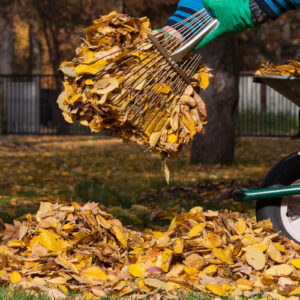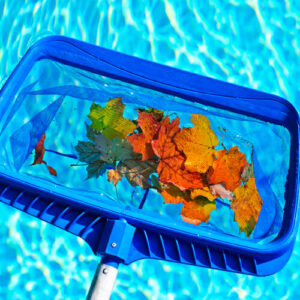
5 Super Effective Ways to Tackle Pesky Autumn Leaves
September 27, 2016 | Gardening Tips | No comments
A couple of autumn leaves fall onto your lawn. You don’t really notice. A few more fall on the grass and into the flower beds. No problem, they’ll release essential nutrients as they rot and help feed your plants. Then the autumnal foliage ups its game and seemingly overnight the whole lawn is obscured by a carpet of fiery hues. Time to break out the garden tools.
But which de-leafing tool is best for your outdoor areas? To help you we’ve put together the five best leaf removal methods and the pros and cons of each.
Raking
First up the most obvious tool: the trusty rake. Raking leaves into a pile then scooping them into your wheelbarrow is a tried and tested method.

Pros:
- Effectively removes autumn leaves
- The only leaf removal technique that helps to remove thatch too (the build-up of dead leaves and grass on the soil that stops nutrients and water getting to the roots of your grass)
Cons:
- Time-consuming process
- Involves lots of bending over and physical activity, which isn’t ideal if you’ve got a bad back
- Sharp rake tines could scratch decking or damage tender stems in your flower beds.
Best suited to:
Lawns
Brushing
On flat areas, a broom beats a rake hands down. We especially like the Renegade Broom, which we tried out a couple of months ago, as it picks up autumn leaves and garden debris much more easily than your standard garden broom.

Pros:
- Very effective on flat surfaces
- Will pick up dirt and dust too, leaving patio and decking looking cleaner and tidier
Cons:
- Labour intensive like the rake
Best suited to:
Patios, decking and paved driveways
Using a Leaf Blower
To save time (and your back) a leaf blower easily makes piles of dry autumn leaves that you can scoop up into your wheelbarrow.

Pros:
- Less labour intensive and quicker than raking or brushing
- Blowers can be used to remove leaves from tricky places like gutters, rockeries, gravel, the base of fences and the edges of your garden.
Cons:
- You won’t pick up every single leaf with your blower. If you want to completely remove leaves from your lawn you’ll most likely have to pick up a few leafy stragglers by hand.
Best suited to:
All areas especially nooks and crannies around your garden
Using a Garden Vacuum
Garden vacuums let you remove and gather leaves at the same time. You can get both stand-alone garden vacs and leaf blowers that also have a vacuum function.

Pros:
- Removes leaves straight away without having to pile them up first
- Some models even shred the leaves for you, so they break down into compost quicker.
Cons:
- The capacity of the average garden vac bag isn’t huge; you’ll probably need to empty it often.
- Some vacs cope better than others with wet leaves and rubbish.
Best suited to:
Most areas except gravel, bark and any other garden materials likely to be sucked into the vac.
Netting Autumn Leaves
How do you remove leaves from your pond? A fishing or swimming pool net is ideal. A few leaves won’t be harmful, but too many can build up at the bottom and affect the fish or marine life living there.

Pros:
- You get both maximum convenience and minimum disruption to pond life; using a net means you don’t have to remove the water from your pond.
Cons:
- Accidentally removing more than you bargained for! Check no fish or other marine life has been caught in the net.
- Heavy netfuls of leaves can cause the net handle to bend or break. Select a sturdy model.
Best suited to:
Ponds, water features and pools
One last tip! Once you’ve collected your autumn leaves we highly recommend adding them to your compost heap to mulch down. Leaf mulch can be used to help keep your soil, lawn and flowerbeds healthy. Adding shredded leaves to flowerbeds also helps protect plants over winter. Want more handy gardening tips? See our autumn recommendations for savvy gardeners.
Tags: Autumn Leaves, Garden Appliances

